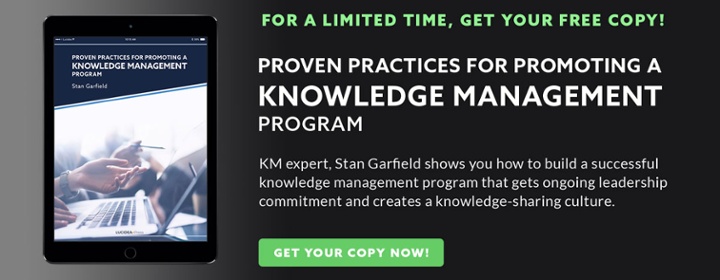
The single most important “KM sale” you can make is to your senior leaders. In my first two posts on this topic, I asserted that in my experience, if you get them on board, everything else will be much easier. If you can’t: try, try, and try again. Valuable tools for getting leadership sponsorship and support include telling stories, making the business case, and selling the benefits. Please read on to learn about selling the benefits, drawn from my new book Proven Practices for Promoting Knowledge Management.
A few tips for selling the benefits of knowledge management
With any change initiative, all stakeholders want to know what’s in it for them; implementing a knowledge management program is no different. To help leaders understand the benefits for them personally, and for the organization overall, answer the following questions.
- Why should we implement a KM program? Articulate your vision.
- What exactly are the benefits? Develop a list of benefits (see the list below) and tie these to your organizational goals.
- How will a KM program help our organization accomplish its most critical objectives? Tie your Top 3 KM Objectives to the organization’s overall priorities.
- How will our organization improve as a result? Make the business case.
- How will our people’s needs, opportunities, and challenges be met? Share compelling use cases from analogous organizations and scenarios.
15 KM Benefits
- Better and faster decision making
- Users can easily find relevant information and resources
- Ideas, documents, and expertise can be reused
- No duplication of effort
- Mistakes aren’t repeated
- Existing expertise and experience can be leveraged
- Important information gets communicated widely and quickly
- Processes and procedures can be standardized and repeatable
- Methods, tools, templates, techniques, and examples are available
- Unique expertise becomes widely accessible
- Customers can see exactly how knowledge is used for their benefit
- Accelerated customer delivery
- Organizations can leverage scale
- The best organizational problem-solving experiences are reusable
- Innovation and growth are stimulated
Lucidea Press has published my latest book, Proven Practices for Promoting a Knowledge Management Program, which includes additional information on obtaining leadership commitment, and many insights drawn from my career as a KM practitioner.



